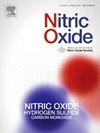一氧化氮合酶 II 在实验性脑疟疾导致的认知障碍中的作用
IF 3.2
2区 生物学
Q2 BIOCHEMISTRY & MOLECULAR BIOLOGY
引用次数: 0
摘要
一氧化氮(NO)在脑型疟疾的发病机制及其认知后遗症中的作用仍存在争议。脑疟疾仍然是恶性疟原虫感染最严重的并发症,其特点是发病率和死亡率都很高。即使在抗疟治疗后感染痊愈,幸存者也会出现认知障碍,这就更加需要寻求新的疗法,以证明其在预防长期后遗症方面的疗效。在疾病发病过程中,强烈的炎症反应会产生活性氧和氮物种(RONS)。诱导型一氧化氮合酶(iNOS)的表达增加似乎是造成组织损伤和神经损伤的原因之一。iNOS 生成的一氧化氮水平升高可诱导产生过氧化亚硝酸盐等高度有害的氮反应中间产物。为了解决这个问题,我们在C57BL6小鼠、氨基胍(iNOS酶的特异性药理抑制剂)治疗小鼠和iNOS-/-小鼠中进行了生化和行为研究,这些小鼠感染了伯格氏疟原虫ANKA(PbA),目的是阐明iNOS对脑疟疾发病机制的影响。我们的研究结果表明,这两种策略都能有效减少脑疟疾的发病率,并防止与该疾病相关的认知障碍。在这里,缺失或阻断 iNOS 酶能有效减少感染六天后发现的脑疟疾症状。与此同时,促炎细胞因子以及活性氧和氮物种的产生也有所减少。此外,亚硝基酪氨酸(NT-3)--一种亚硝基应激的标志物--也有所减少。此外,我们还分析了感染十五天后通过氯喹治疗(25 毫克/千克体重)从感染中解救出来的动物的认知功能障碍。我们观察到,对 iNOS 酶的两种干预措施都能改善小鼠的记忆力和学习能力。总之,我们的数据表明,iNOS 酶有可能成为预防脑疟疾认知后遗症的治疗靶点。本文章由计算机程序翻译,如有差异,请以英文原文为准。
Role of Nitric oxide synthase II in cognitive impairment due to experimental cerebral malaria
The role of nitric oxide (NO) in the pathogenesis of cerebral malaria and its cognitive sequelae remains controversial. Cerebral malaria is still the worst complication of Plasmodium falciparum infection, which is characterized by high rates of morbidity and mortality. Even after recovery from infection due to antimalarial therapy, the development of cognitive impairment in survivors reinforces the need to seek new therapies that demonstrate efficacy in preventing long-lasting sequelae. During disease pathogenesis, reactive oxygen and nitrogen species (RONS) are produced after the established intense inflammatory response. Increased expression of the enzyme inducible nitric oxide synthase (iNOS) seems to contribute to tissue injury and the onset of neurological damage. Elevated levels of NO developed by iNOS can induce the production of highly harmful nitrogen-reactive intermediates such as peroxynitrite. To address this, we performed biochemical and behavioral studies in C57BL6 mice, aminoguanidine (specific pharmacological inhibitor of the enzyme iNOS) treated and iNOS−/−, infected with Plasmodium berghei ANKA (PbA), with the aim of clarifying the impact of iNOS on the pathogenesis of cerebral malaria. Our findings underscore the effectiveness of both strategies in reducing cerebral malaria and providing protection against the cognitive impairment associated with the disease. Here, the absence or blockade of the iNOS enzyme was effective in reducing the signs of cerebral malaria detected after six days of infection. This was accompanied by a decrease in the production of pro-inflammatory cytokines and reactive oxygen and nitrogen species. In addition, nitrotyrosine (NT-3), a marker of nitrosative stress, was also reduced. Futher, cognitive dysfunction was analyzed fifteen days after infection in animals rescued from infection by chloroquine treatment (25 mg/kg bw). We observed that both interventions on the iNOS enzyme were able to improve memory and learning loss in mice. In summary, our data suggest that the iNOS enzyme has the potential to serve as a therapeutic target to prevent cognitive sequelae of cerebral malaria.
求助全文
通过发布文献求助,成功后即可免费获取论文全文。
去求助
来源期刊

Nitric oxide : biology and chemistry
生物-生化与分子生物学
CiteScore
7.50
自引率
7.70%
发文量
74
审稿时长
52 days
期刊介绍:
Nitric Oxide includes original research, methodology papers and reviews relating to nitric oxide and other gasotransmitters such as hydrogen sulfide and carbon monoxide. Special emphasis is placed on the biological chemistry, physiology, pharmacology, enzymology and pathological significance of these molecules in human health and disease. The journal also accepts manuscripts relating to plant and microbial studies involving these molecules.
 求助内容:
求助内容: 应助结果提醒方式:
应助结果提醒方式:


